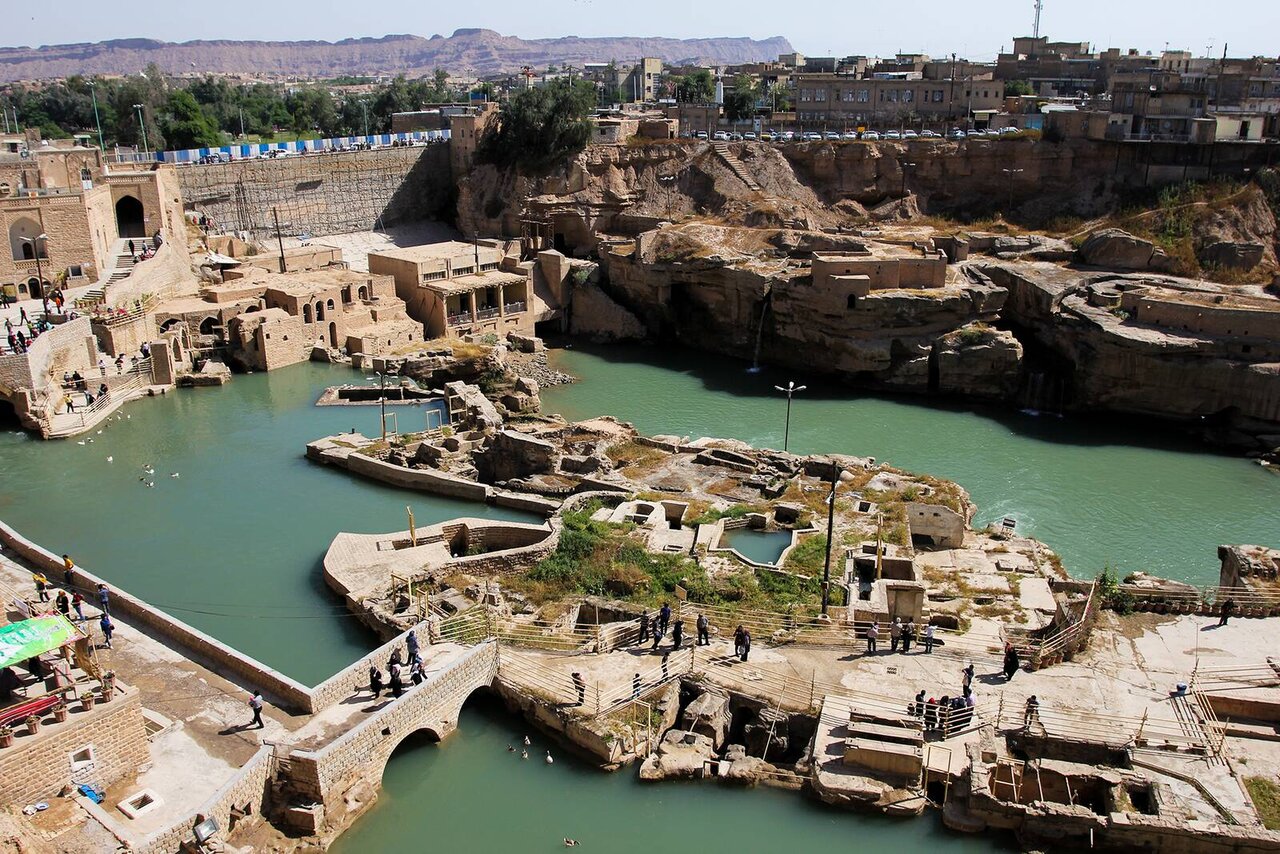Shushtar Hydraulic System: a living testament to ancient water engineering in Iran

TEHRAN - Today marks the anniversary of the UNESCO inscription of the Shushtar Historical Hydraulic System, a testament to the ingenuity and creativity of ancient Iranian engineering.
Dubbed a “masterpiece of creative genius” by the UN cultural body, these water structures exemplify the advanced knowledge and skill of ancient Iranian engineers in water management and architecture.
The property can be considered a living museum of Iran’s water industry, providing tangible evidence of the advanced engineering knowledge possessed by the ancient Iranians. Although only parts of this intricate system remain today, the cascading waters, mills, beautiful artificial waterfalls, and pools still create a breathtaking scene in the heart of the city.
Interestingly, these historical water structures have been interconnected for centuries and still function as a cohesive water system.
Recognized as one of the largest known industrial complexes in the pre-industrial world, the Shushtar Hydraulic System was inscribed as a UNESCO World Heritage Site in the fifth of Tir (June 25) 2009.
This system, which dates back to the time of Darius the Great in the 5th century BC, involved the creation of two main diversion canals on the Karun River. One of these, the Gargar canal, remains in use today, supplying water to Shushtar through a series of tunnels that power mills. This system forms a spectacular cliff from which water cascades into a downstream basin before entering the plain south of the city, where it has enabled the cultivation of orchards and farmland over an area of 40,000 hectares.
The Shushtar Hydraulic System is not just an ancient marvel; it is a symbol of human ingenuity and the ability to harmonize with natural elements. The system includes a variety of interconnected elements, such as bridges, dams, tunnels, and mills, all working together to manage and utilize water efficiently. The design and construction of these structures demonstrate a profound understanding of hydraulic engineering and a deep respect for the environment.
The legacy of the Shushtar Hydraulic System continues to inspire modern engineers and architects. Its innovative design and functionality have been studied and admired by scholars worldwide. The system’s ability to sustain agricultural practices and support the local population for centuries stands as a remarkable achievement in sustainable engineering.
As we look to the future, the lessons of Shushtar remind us of the incredible potential of human ingenuity and the enduring value of harmony with the natural world.
AM
Leave a Comment